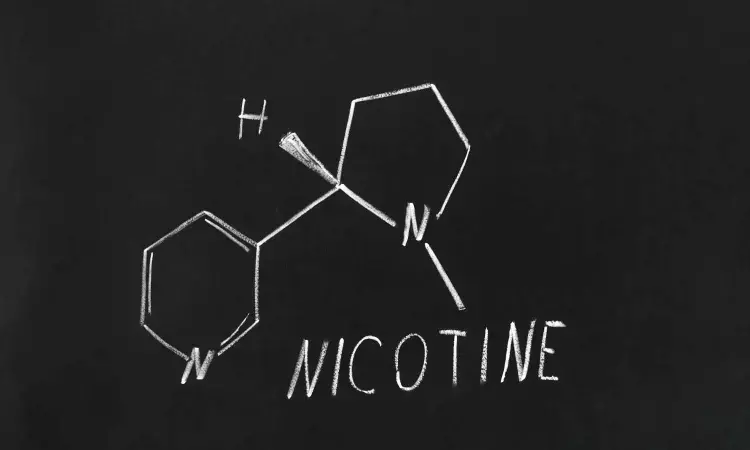- Home
- Medical news & Guidelines
- Anesthesiology
- Cardiology and CTVS
- Critical Care
- Dentistry
- Dermatology
- Diabetes and Endocrinology
- ENT
- Gastroenterology
- Medicine
- Nephrology
- Neurology
- Obstretics-Gynaecology
- Oncology
- Ophthalmology
- Orthopaedics
- Pediatrics-Neonatology
- Psychiatry
- Pulmonology
- Radiology
- Surgery
- Urology
- Laboratory Medicine
- Diet
- Nursing
- Paramedical
- Physiotherapy
- Health news
- Fact Check
- Bone Health Fact Check
- Brain Health Fact Check
- Cancer Related Fact Check
- Child Care Fact Check
- Dental and oral health fact check
- Diabetes and metabolic health fact check
- Diet and Nutrition Fact Check
- Eye and ENT Care Fact Check
- Fitness fact check
- Gut health fact check
- Heart health fact check
- Kidney health fact check
- Medical education fact check
- Men's health fact check
- Respiratory fact check
- Skin and hair care fact check
- Vaccine and Immunization fact check
- Women's health fact check
- AYUSH
- State News
- Andaman and Nicobar Islands
- Andhra Pradesh
- Arunachal Pradesh
- Assam
- Bihar
- Chandigarh
- Chattisgarh
- Dadra and Nagar Haveli
- Daman and Diu
- Delhi
- Goa
- Gujarat
- Haryana
- Himachal Pradesh
- Jammu & Kashmir
- Jharkhand
- Karnataka
- Kerala
- Ladakh
- Lakshadweep
- Madhya Pradesh
- Maharashtra
- Manipur
- Meghalaya
- Mizoram
- Nagaland
- Odisha
- Puducherry
- Punjab
- Rajasthan
- Sikkim
- Tamil Nadu
- Telangana
- Tripura
- Uttar Pradesh
- Uttrakhand
- West Bengal
- Medical Education
- Industry
Sharp Rise in Nicotine Pouch Ingestions Among Young Children Despite Overall Decline: Study

Nicotine ingestions among young children declined from 2015 to 2023. However, a study in published in Pediatrics journal reported a dramatic increase (over 700%) in nicotine pouch ingestions from 2020 to 2023. In light of this, experts urge parents to store nicotine products in locked, child-proof containers to prevent access.
Numerous items that contain nicotine, such as gum, e-liquids, lozenges, pouches, powder or granules, pills, capsules, or caplets, as well as regular cigarettes, are linked to the frequent exposure of children to nicotine. Investigating the features and patterns of nicotine ingestions among young children submitted to US poison centres is the aim of this study.
From 2010 to 2023, researchers examined accidental, single-substance nicotine intakes in children under the age of six that were reported to the National Poison Data System, as a part of the primary investigative method of this study.
Of the 134,663 cases of nicotine intake in children under the age of six that were reported to US poison centers, the majority occurred in children under the age of two (76.2%), in boys (55.5%), or at home (98.5%). from 2010 and 2015, the rate of nicotine ingestions rose by 59.4% (P <.001), and from 2015 and 2023, it decreased by 34.1% (P <.001).
The main factor influencing this rate pattern was the rate of consumption of liquid nicotine, which rose by 450.0% between 2010 and 2015 (P <.001) and subsequently fell by 45.2% between 2015 and 2023 (P <.05). Nearly, 81.3% did not obtain treatment at a medical facility, and the majority of nicotine ingestions were linked to either no impact (36.7%) or a slight effect (19.6%). There were 39 ingestions with serious consequences and two fatalities, whereas 1.2% of ingestions had moderate effects.
Almost, 0.5% of ingestions required medical admission, whereas 15.9% of ingestions were treated, assessed, and released. Between 2020 and 2023, the rate of nicotine pouch ingestions rose by 763.1%. When compared to all product formulations combined, nicotine pouches had a higher likelihood of being linked to a significant medical result (odds ratio [OR]: 1.53, 95% CI: 1.10–2.13) or a hospital admission (OR: 2.03, 95% CI: 1.31–3.15).
Overall, serious consequences, including 2 fatalities, did occur even though the majority of nicotine ingestions in children under the age of 6 were linked to minimal or clinically minor effects. The rise and relative seriousness of nicotine pouch ingestions serve as a reminder of the public health issues associated with the changing market for oral nicotine products.
Source:
Olivas, M., Hays, H. L., Kistamgari, S., Rine, N. I., Zhu, M., Yang, J., & Smith, G. A. (2025). Nicotine ingestions among young children: 2010-2023. Pediatrics, e2024070522. https://doi.org/10.1542/peds.2024-070522
Neuroscience Masters graduate
Jacinthlyn Sylvia, a Neuroscience Master's graduate from Chennai has worked extensively in deciphering the neurobiology of cognition and motor control in aging. She also has spread-out exposure to Neurosurgery from her Bachelor’s. She is currently involved in active Neuro-Oncology research. She is an upcoming neuroscientist with a fiery passion for writing. Her news cover at Medical Dialogues feature recent discoveries and updates from the healthcare and biomedical research fields. She can be reached at editorial@medicaldialogues.in
Dr Kamal Kant Kohli-MBBS, DTCD- a chest specialist with more than 30 years of practice and a flair for writing clinical articles, Dr Kamal Kant Kohli joined Medical Dialogues as a Chief Editor of Medical News. Besides writing articles, as an editor, he proofreads and verifies all the medical content published on Medical Dialogues including those coming from journals, studies,medical conferences,guidelines etc. Email: drkohli@medicaldialogues.in. Contact no. 011-43720751


